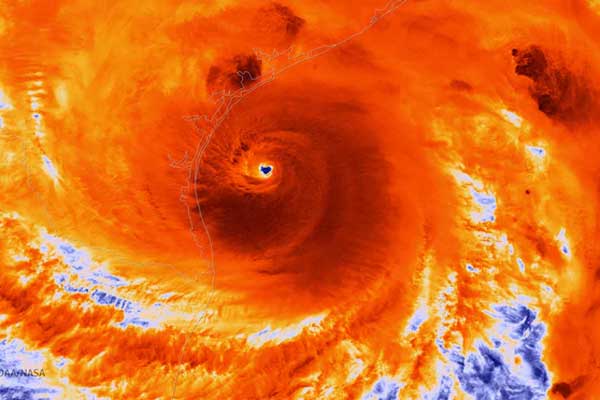Last year, in the midst of what some called a “once-in-a-lifetime” hurricane season, we looked at solar energy’s resiliency in the face of extreme weather.
A year/lifetime” later, another devastating season of hurricanes including Michael and Florence have battered American shorelines. As Florence hovered over North Carolina, home to the second most solar capacity installed in the country, onlookers saw first-hand how solar can weather an extreme storm.
Resilient In All Ways
As expected, solar withstood the forces of Florence quite well. Major owners and operators of solar assets in the state such as Duke, Cypress Creek, and Strata reported little to no damage from their solar resources.
Many projects in the path of the storm were taken offline, in some cases preemptively, to protect the systems. Although this places some financial strain on stakeholders who see revenue losses when generation stops, most systems were online within a week, and losses were minimal.
Hurricane Florence posed its largest threat in the form of storm surge flooding, but most solar projects are specifically built in areas where flooding can be avoided.
Even in extreme cases like Florence, important electricity sources, such as inverters, are situated high enough off the ground to avoid water damage.
Solar engineers conduct mandatory hydrology studies in order to best plan for potential flooding. Most projects are also built to withstand winds up to 140 mph, and experienced developers build stronger foundations for panels on the outer rows that face stronger force.
Any solar projects built with trackers, which angle panels throughout the day to follow the sun, will often situate the panels at optimal angles to minimize wind disruption, which can be done from a remote location.
Projects under construction are perhaps the most at risk of wind damage, as equipment and uninstalled panels can potentially get caught into the wind. However, a well-secured site can avoid most any complications.
Fossil Fuel Resources Are Failing the Test
After the hurricane, CBS News reported that two coal plants, one of them retired, were hit hard by the hurricane with one spilling coal ash into a nearby river close to Wilmington, North Carolina.
Many residents depending on coal power in the state were still out of power two weeks after the storm. With wind power faring just as well as solar in the wake of the storm, these results show the upper-hand renewables have in many ways.
While damage sustained by coal plants during Florence showed the environmental impacts when those sources are damaged (not to mention when running), potential damage to solar or wind pose little comparable threat to the ecosystem.
While nuclear power still struggles with public fears of potential weather damage after the tragedy at Fukujima, wind and solar generate power that can survive a storm and provide power when it is needed most.
You can’t spill the sun or the wind. And while the amount of energy a fossil fuel plant generates often dwarfs that of a solar farm, one coal plant that is forced offline because of a storm can affect tens of thousands of customers.
The distributed nature of solar can help the grid avoid putting all of its eggs in one basket and mitigate the potential fallout.
–
As we prepare to see storms of this magnitude build in increasingly warm waters in the years to come, solar must be seen for not just its clean energy, but for its resilience in the face of the danger.












Comments